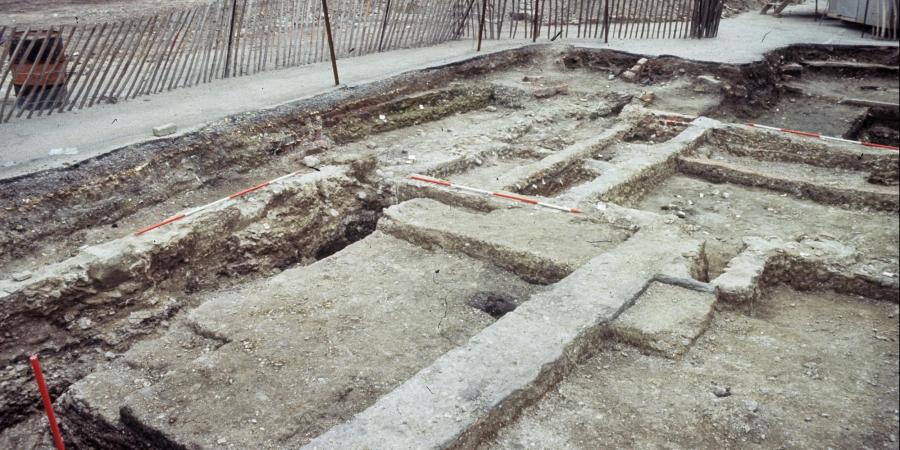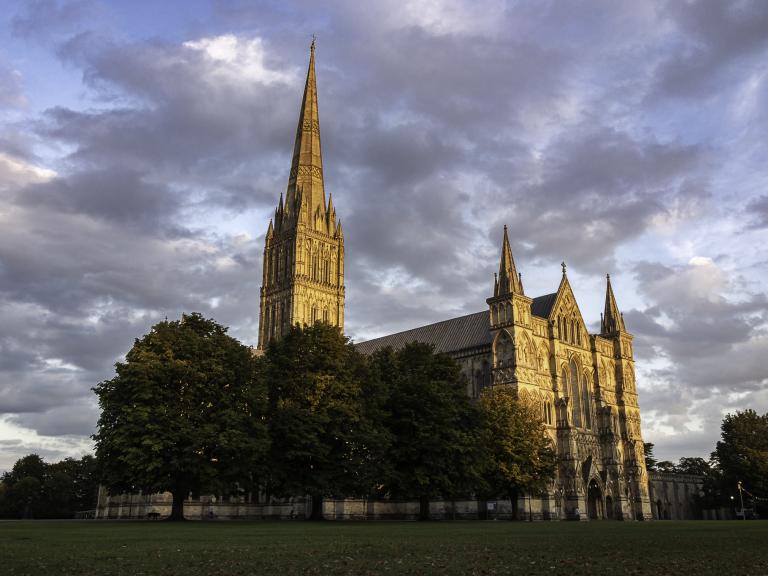Our field of interest now resumes by moving to the west side of Trinity Chequer, on the Brown Street frontage at Nos 37 and 39 Brown Street. The two properties were divided by a passageway, which, like elsewhere, probably became fossilised from the initial medieval survey. Both properties were demolished in 1965 but were described by The Royal Commission on Historic Monuments, before their destruction, as two 18th century brick buildings with a 16th century service range to the rear of No 39. Permission to demolish such properties would almost certainly be denied now, however historic buildings, many with features of architectural merit, were routinely cleared without due record in the 1960s. The excavation was concentrated over No 39 where layers were thought to be better preserved and an initial trench measuring 15 x 7m was excavated. An extension, measuring 5 x 3m, was subsequently added to the east, collectively representing 5% of the proposed development area.
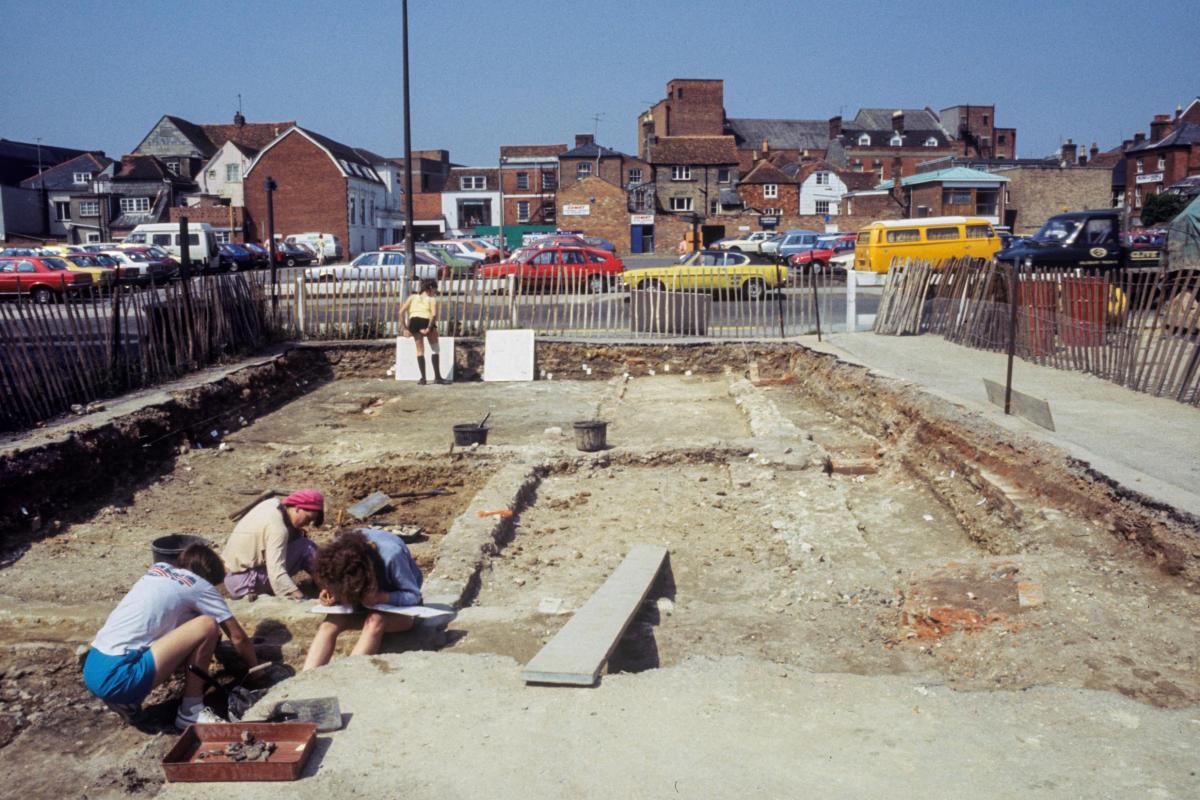
Four sherds of 13th century pottery and a fragment of glazed floor tile from a basal buried soil indicated that the initial development of the street frontage had probably started at the same time as other construction in the chequer. The first traces of buildings were preserved by a flint and tile wall foundation which supported a timber framed structure, of which only the northern wall survived. This foundation may have been repaired on more than one occasion. Two internal divisions of similar construction and a chalk floor also produced 13th or 14th century pottery.
A succession of often discontinuous floor layers suggested that the interior had been repaired rather than renewed on several occasions. A silver penny of Edward I (1272-1307) or Edward II (1307-1327), a period which probably saw completion of the cathedral spire, was found in one of the earliest layers. Successive floors containing 14th-15th century pottery showed that occupation continued unbroken throughout the 14th century. Most of the external wall foundations lay outside the limits of the trench, which made it impossible to reconstruct the ground-plan of these medieval buildings; however, we can conjecture that they were similar to adjoining properties in Brown Street, which we will visit next week, and to those we saw at the Anchor Brewery in Gigant Street.
The consistent patterns of building design, which we have seen from repeated excavations, show how well-preserved building footprints in one site in the city can often be applied to other locations where the evidence is less well preserved. Naish’s survey of 1716 also provides tantalising hints of standardised construction. This invaluable record of the medieval city lacked detail, but nevertheless distinguished between buildings around the Market Square in the Cross Keys Chequer which were shown with courtyards and those in outlying chequers, including Trinity Chequer, which were depicted as single terraces (below).
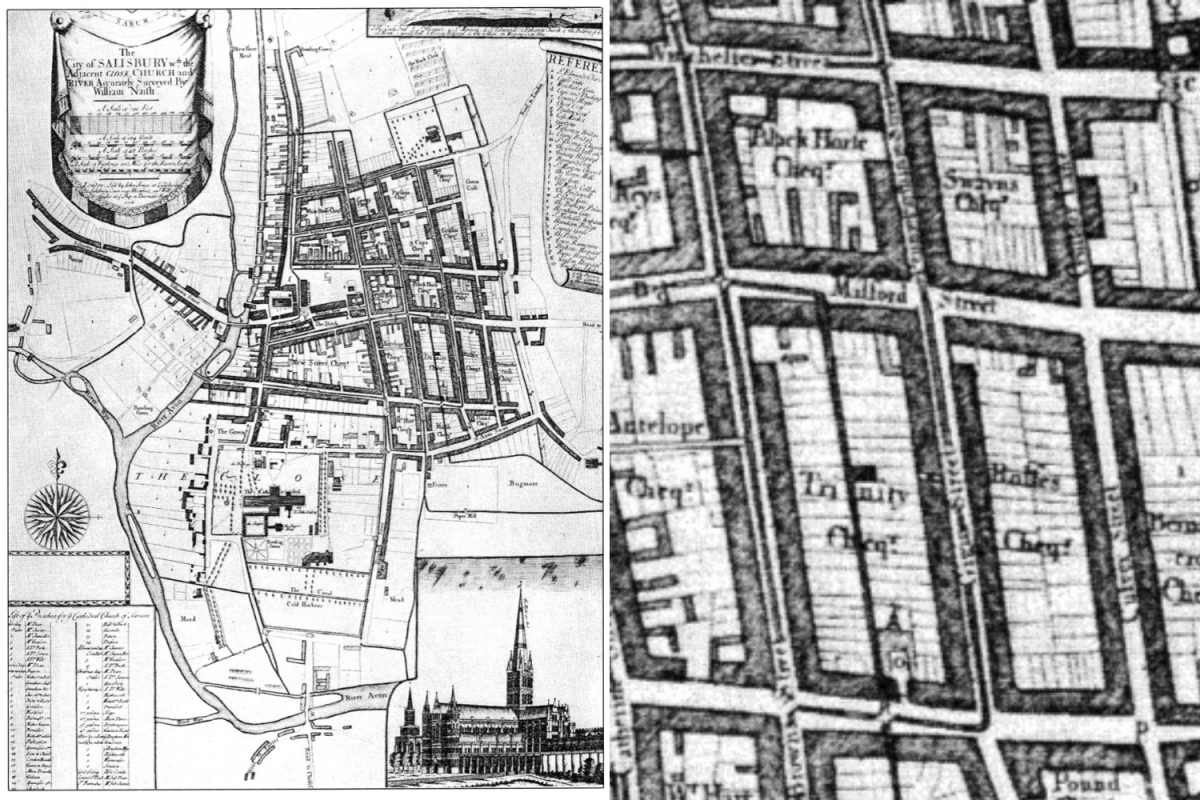
Four individual phases/sub-phases of redevelopment spanned the period covering the 15th-17th century, although traces of the final episodes had been heavily disturbed when the building was demolished in 1965. This relatively complex sequence suggested that multiple changes were made over a relatively short space of time, including the construction of the 16th century service range at the rear of No. 39. We know from the survey that was compiled before its demolition that this range was of the anticipated timber framed construction with a jettied upper floor, although these details were hidden from view behind a later brick skin. The below-ground evidence of the range on the street frontage, as revealed in the excavation, indicated that the northern wall foundation had been replaced and the rear of the building had also been modified. Greensand blocks were inserted at strategic points which may have supported uprights of a timber sub-frame. Further internal divisions and peg-tile hearths (below), which were subsequently replaced, were also added.
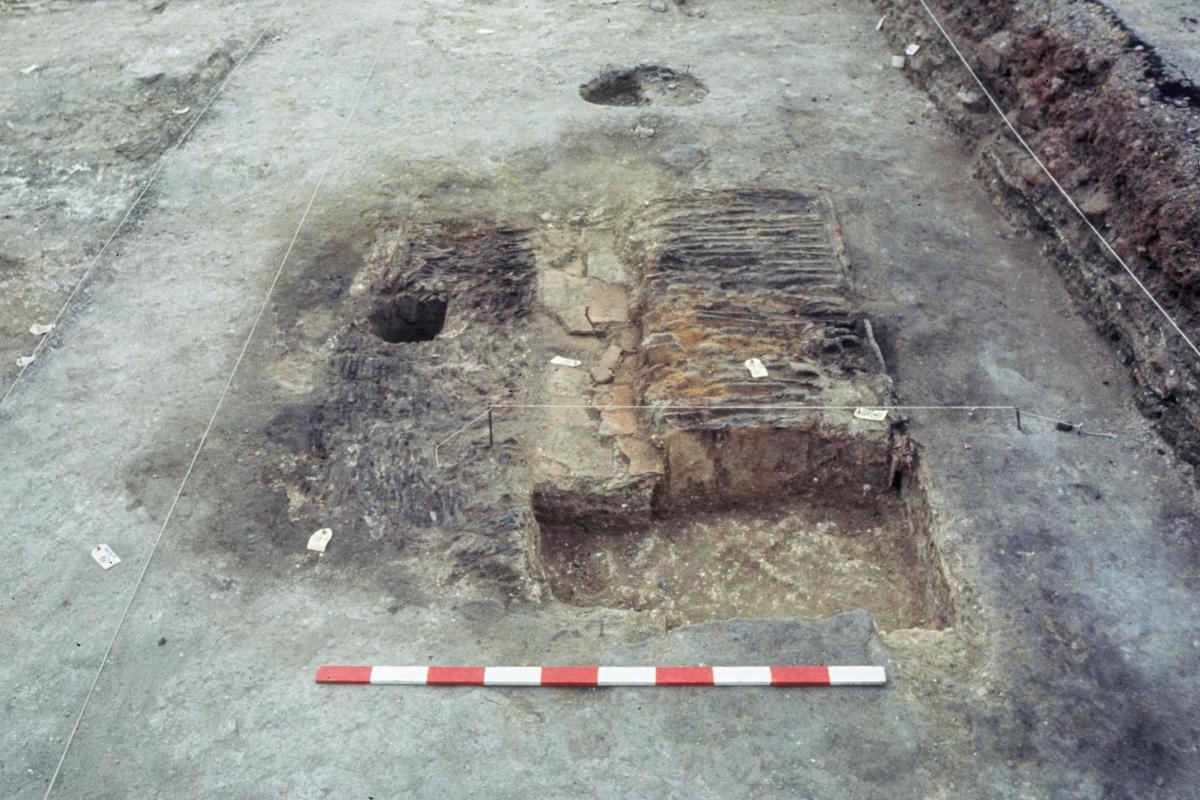
The street frontage tenements underwent major transformation using bricks in the mid-18th century. This major change in building materials removed most above-ground traces of the timber framed buildings which had occupied the site since the foundation of the city, but which remained preserved in the foundations. The archaeological excavations allow us to combine these remnants with surviving buildings to reconstruct how the façade, roof lines and chimneys may have appeared and impacted on the city skyline.
The 39 Brown Street site in 2020. The medieval buildings have gone, but their jettied influences remain in the modern design of the current street frontage
